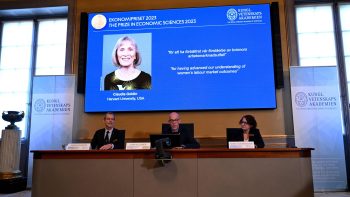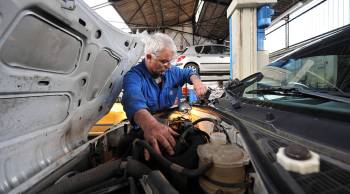Jeremy Hobson: Later this morning, the Conference Board will give us some data that can be used as an economic forecast. It’s called the Leading Economic Index. But this time, the way the numbers are crunched will be different.
Marketplace’s Economy 4.0 correspondent David Brancaccio has been looking at how the economy can better serve more people going forward, and he joins us now from New York to discuss. Good morning, David.
David Brancaccio: Hi Jeremy.
Hobson: So first tell us about the old-fashioned economic index that we’ve had up until now.
Brancaccio: Its traditional grab bag was everything from building permits to different surveys of consumer confidence. And then there was this thing called — I hope you’re sitting down — it was called the Real Money Supply. It’s not all that complicated; it’s money, it’s coins, paper currency, stuff that you have by your bedside on that little table there over by your night light. It’s also your savings accounts, your traveler’s checks. Used to be, back in the day when I was a boy, that was a pretty good indicator of the economy, because that’s where a lot of our money was. But not so much anymore.
Hobson: So now they’re going to change this into a new leading economic index.
Brancaccio: Yeah, and here’s why:
Ataman Ozyildirim: The financial marketplace has become much more complex.
That’s Ataman Ozyildirim, who directs economic research for the Conference Board, the business research group that pulls together the leading economic index. It’s more complex, he says, and we have all these wonderful different places to put our money — not just coins and savings accounts, right? There are credit cards, you can write those fakey little checks that draws money right from your home equity line, if you want to. So, the new-fangled model year 2012 leading economic index is going to have something called “credit” in it.
Ozyildirim: The new leading credit index should give us a better picture of all the different types of credit activity and how that might impact and interact with the economic cycle.
So this credit index is embedded in the overall new-fangled leading economic indicators. And Jeremy, it makes sense, right? If you want to get a sense of where the economy’s going, why not ask a loan officer at a bank, ‘Are you lending these days?’
Hobson: That’s right, you’ve got to talk about the money that we’re spending that we don’t have, as well as the money that we’re spending that we do.
Brancaccio: Beautifully put.
Hobson: Marketplace’s Economy 4.0 correspondent David Brancaccio. David, thanks.
Brancaccio: You bet.
There’s a lot happening in the world. Through it all, Marketplace is here for you.
You rely on Marketplace to break down the world’s events and tell you how it affects you in a fact-based, approachable way. We rely on your financial support to keep making that possible.
Your donation today powers the independent journalism that you rely on. For just $5/month, you can help sustain Marketplace so we can keep reporting on the things that matter to you.


















